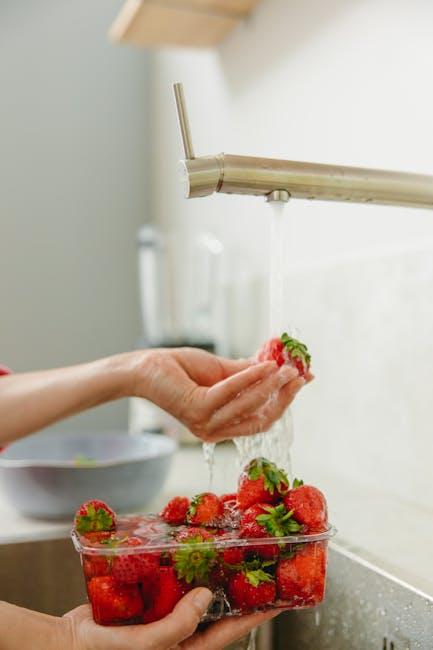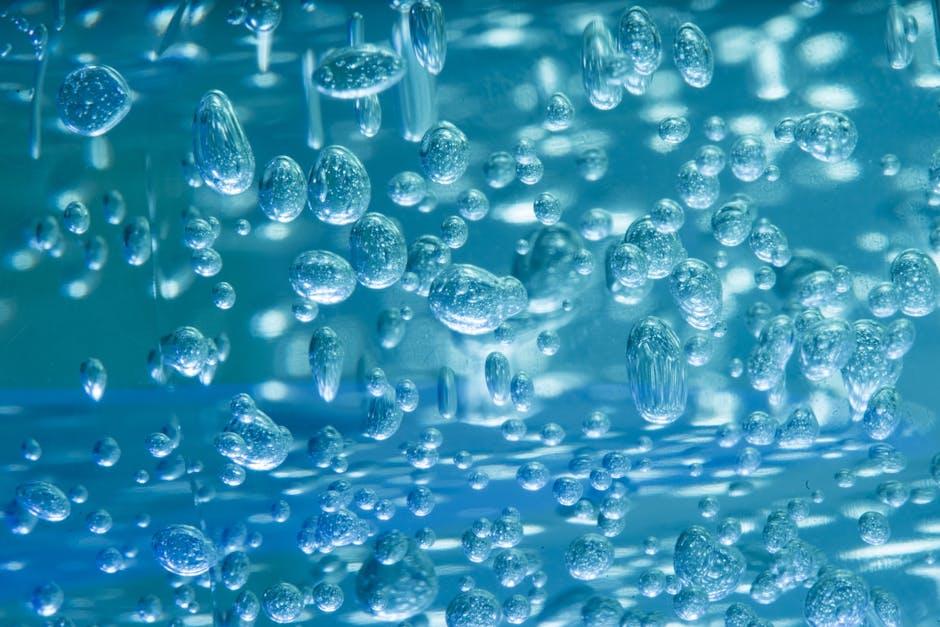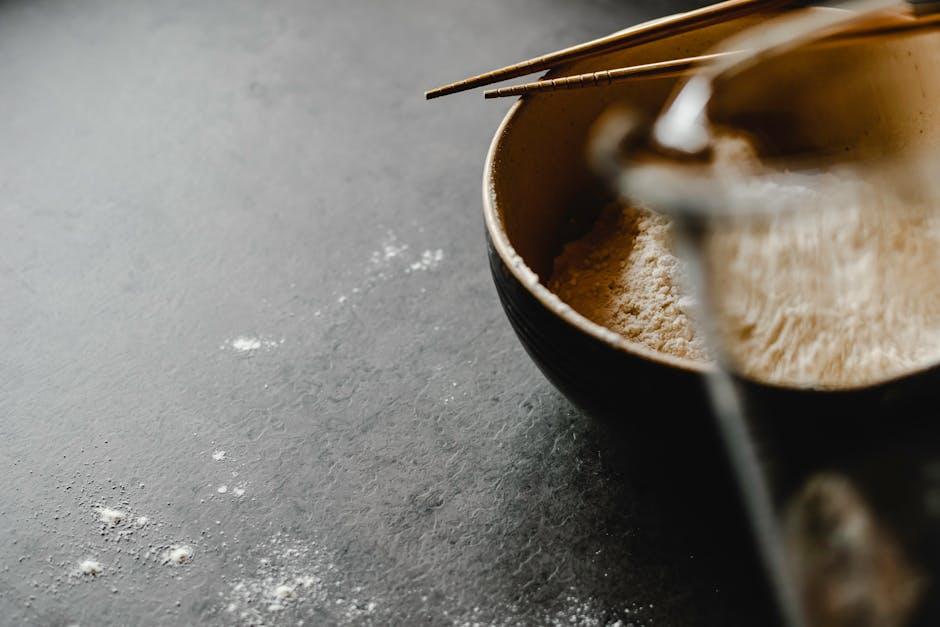In a world filled with countless chemical-laden products promising a sparkling kitchen, the allure of natural alternatives is more captivating than ever. Making your own kitchen cleaning sprays not only puts the power of purity back into your hands but also transforms a routine chore into a mindful ritual. By harnessing the simple, effective ingredients found in your pantry, you can create sprays that are gentle on surfaces, safe for your family, and kind to the environment. This journey into natural cleaning isn’t just about scrubbing away mess-it’s about embracing a cleaner, healthier way of living, one spray at a time.
Choosing the Best Natural Ingredients for Effective Cleaning

When crafting your own kitchen cleaning sprays, selecting the right natural ingredients is crucial for both effectiveness and safety. Vinegar, for instance, is a powerful natural degreaser and disinfectant, perfect for cutting through stubborn grime without leaving harmful residues. Lemon juice brings an invigorating scent along with natural antibacterial properties and gentle bleaching effects, making it ideal for tackling stains and refreshing surfaces. Baking soda, known for its mildly abrasive texture, can scrub away dirt without scratching your countertops, while also neutralizing odors to keep your kitchen smelling clean and fresh.
To optimize the benefits of these ingredients, consider combining them thoughtfully. Here are some natural staples and what they bring to the cleaning table:
- White vinegar: Removes mineral deposits and eliminates grease.
- Lemon juice: Acts as a natural disinfectant and brightener.
- Baking soda: Provides gentle abrasion and deodorizing power.
- Essential oils (like tea tree or lavender): Add antimicrobial properties and pleasant scent.
| Ingredient | Primary Cleaning Benefit | Best Use |
|---|---|---|
| White Vinegar | Degreasing & Disinfecting | Countertops, stovetops |
| Lemon Juice | Brightening & Antibacterial | Cutting boards, sinks |
| Baking Soda | Scrubbing & Odor Removal | Oven interiors, drains |
| Tea Tree Oil | Antimicrobial & Freshening | General surface spray |
Understanding the Science Behind Natural Cleaning Agents

At the heart of natural cleaning lies the powerful chemistry found in everyday ingredients. Take vinegar, for example: its acetic acid content disrupts the bonds holding grease and grime, effectively breaking them down without harsh toxins. Baking soda, a mild alkali, neutralizes odors and reacts with acids to lift stubborn stains, making it a versatile tool in your cleaning arsenal. Essential oils, like tea tree or lemon, add not only refreshing scents but also contain antimicrobial properties that enhance the spray’s effectiveness.
Understanding these natural interactions helps you tailor your cleaning sprays for different purposes. Here’s a basic breakdown of common natural agents and their cleaning capabilities:
- Vinegar: cuts through mineral deposits and disinfects surfaces
- Baking Soda: deodorizes, exfoliates, and removes residue
- Essential Oils: provide antibacterial and antifungal benefits
- Lemon Juice: naturally bleaches and dissolves grease
| Ingredient | Cleaning Role | Best For |
|---|---|---|
| Vinegar | Degreaser & Disinfectant | Kitchens, glass, countertops |
| Baking Soda | Scrubbing & Deodorizing | Sinks, drains, ovens |
| Essential Oils | Antimicrobial & Fragrance | General freshening |
| Lemon Juice | Bleaching & Grease Cutting | Cutting boards, stains |
Step-by-Step Guide to Crafting Your Custom Kitchen Spray

Begin by gathering your ingredients and tools: a spray bottle, distilled water, white vinegar or rubbing alcohol, essential oils (like lemon, eucalyptus, or tea tree), and a few teaspoons of natural liquid soap or castile soap. Start by filling your spray bottle with about 2 cups of distilled water, which will serve as the base of your spray. Next, add ¼ cup of white vinegar or ½ cup of rubbing alcohol for natural disinfecting power. A few drops of your favorite essential oils will not only provide a pleasant scent but also boost antibacterial properties. For improved cleaning, add 1-2 teaspoons of liquid soap, which helps cut through grease and grime effectively.
After combining the ingredients, secure the spray nozzle and shake the bottle vigorously to mix well. Before using on your kitchen surfaces, it’s a good idea to label your spray for safety and convenience. Always test a small inconspicuous area first to make sure it won’t damage your surfaces. To help you balance your ingredients precisely, here’s a quick reference chart:
| Ingredient | Amount | Purpose |
|---|---|---|
| Distilled Water | 2 cups | Base, dilutes strong ingredients |
| White Vinegar | ¼ cup | Disinfects, deodorizes |
| Rubbing Alcohol | ½ cup | Kills germs, quick drying |
| Liquid Soap | 1-2 tsp | Breaks down grease |
| Essential Oils | 5-10 drops | Scent and antibacterial effect |
Tips for Storage and Safe Use of Homemade Cleaners

Storing your homemade kitchen sprays properly not only preserves their effectiveness but also ensures safety around the home. Always choose dark glass bottles over plastic to reduce oxidation and degradation caused by light. Label each bottle clearly with the date of creation and the ingredients used, so you can keep track of freshness and avoid any accidental misuse. Store these bottles in a cool, dry place away from direct sunlight and heat, such as a pantry or a cabinet. If your cleaner contains vinegar or essential oils, avoid metal lids as they can corrode over time, potentially contaminating your spray.
When it comes to safe usage, never mix homemade cleaners with commercial cleaning products – especially those containing bleach or ammonia – to prevent dangerous chemical reactions. Use spray nozzles that provide a fine mist for even application, and always test the cleaner on a small, hidden area first to check for surface compatibility. Keep these sprays out of reach of children and pets, and consider an easy-to-understand safety reference table for quick guidance:
| Ingredient | Storage Tip | Safety Note |
|---|---|---|
| Vinegar | Dark glass bottle | Do not mix with bleach |
| Essential oils | Keep away from heat | Test for skin sensitivity |
| Baking soda | Store dry in airtight container | Use promptly after mixing |
In Retrospect
Crafting your own kitchen cleaning sprays naturally is more than just a step toward a greener home-it’s an invitation to reconnect with the simple, powerful ingredients nature offers. As you blend citrus, vinegar, and essential oils into your homemade solutions, you’re not only cleaning surfaces but also nurturing a space where health and sustainability coexist. So next time your countertops need a refresh, reach for your handmade spray and embrace the quiet satisfaction of a kitchen cared for by your own hands, naturally.










